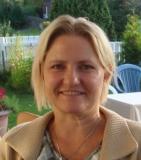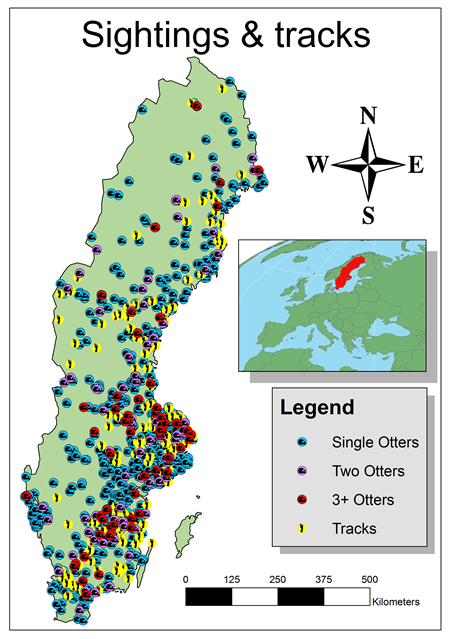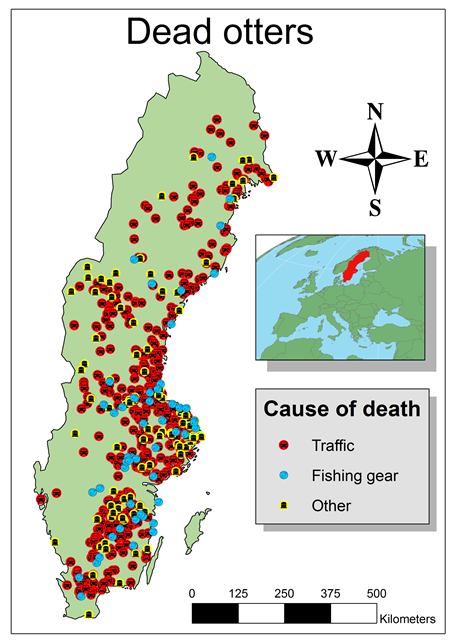IUCN/SSC Otter Specialist Group Bulletin

©IUCN/SCC Otter Specialist Group
Volume 36 Issue 1 (January 2019)
Citation: Loso, K and Roos, A (2019). Citizen Science in Eurasian Otter (Lutra lutra) Research Sighting Reports and Findings of Dead Otters. IUCN Otter Spec. Group Bull. 36 (1): 7 - 16
Citizen Science in Eurasian Otter (Lutra lutra) Research Sighting Reports and Findings of Dead Otters
Department of Environmental Research and Monitoring, Swedish Museum of Natural History, Box 50007, SE-10405 Stockholm Sweden
* Corresponding Author
e-mail - Katarina.Loso@nrm.se
Received 2nd August 2018, accepted 30th December 2018
Abstract: Since 2003 the Swedish Museum of Natural History (SMNH) has administered a web page where the general public can report sightings of otters and otter tracks. Between 2003 and 2014 the Museum received 1142 reports. The reports were divided into season and type of sighting: live animals, tracks and group size. Most reports of live animals were received during spring (35%) and only originated near human populations; the data therefore does not represent the whole country. Nevertheless, this type of citizen science provides a great source of information about the elusive otter and increases public awareness of otters, thus helping to support otter conservation.
In Sweden, otters found dead are sent to the SMNH for necropsy and sampling for the Museum’s Environmental Specimen Bank. A total of 701 dead otters were sent to SMNH between 2003 and 2014. Most otters were killed in traffic (80%) and some were bycaught in fishing gear (8%). Traffic casualties were more common during autumn and winter, whereas bycatches in fishing gear were most common during summer.
Reports of live otters or otter sign, together with the information about the dead otters, suggest patterns of distribution and reproduction status of otters in Sweden. The reports give interesting additional information on the status and behavior of otters and are valuable complements to scientific otter surveys.
Keywords: Lutra lutra, public reports, survey, seasonality, group size, cause of death.
The otter (Lutra lutra) in Sweden decreased dramatically in numbers and distribution range during and after the 1950s, due to a combination of intense hunting over a number of years and elevated concentrations of environmental contaminants (Olsson and Sandegren, 1991a, 1991b; Roos et al., 2001). It was protected against hunting in 1969 and still is. PCBs and DDT were banned in the country in the 1970s, and twenty years after the bans an increase in otter numbers as well as an improved reproductive health among females was observed (Roos et al., 2012). For the last several decades, otters have been surveyed every 5-6 years in various parts of the country, most often by different county boards. The otter is an elusive species, and is often difficult to observe in the wild, which is why surveys are frequently based on otter sign (e.g., scats) and not actual sightings of live animals. The otter does not seem to be too afraid of humans and can be found also in cities in Sweden, i.e. close to humans, for example in medium sizes cities like Mora, Linköping, Strängnäs, Kristianstad, Norrtälje and occasionally also in the capital, Stockholm). While otters can be active during the day, they are possible more active at night. Currently, the species is found in most parts of Sweden: in arctic northern Sweden with 24 hours of daylight during summer and darkness during winter, as well as in the most southern parts of the country.
Some people have the privilege of observing otters from their home, others when taking the dog for a walk, or when hunting or birdwatching. Many people realize that they have seen something special and wish to report the sighting. The Swedish Museum of Natural History (SMNH) has been studying otters since 1970s and has received an increasing number of reports by telephone from people who have seen otters once their population began to increase. Therefore, a webpage has been set up by SMNH for documenting sightings by the general public of live otters and tracks of otters. The reports are published on a map on the museum´s webpage (www.nrm.se/utter). The data gives information on where and when otters are seen.
The otter belongs to the State according to a game law from 1974 and, if found dead, should be sent to SMNH for necropsy and sampling. The police as well as the general public help by sending carcasses to SMNH. Information on where and when the carcasses were found is published on the webpage together with the reports of live animals, and is compiled in this study.
MATERIAL AND METHODS
Reports of otters are received via an online web page at SMNH´s homepage, and occasionally via telephone and mail. The required information includes name and contact information of the observer, if the otter is live or dead, tracks of otter, date, location and if live sightings: from what distance, how many individuals, size of the otter(s) and a description of the circumstances and the otter(s) behavior. Some observers also included photos or films with the report (see Figures 2 - 9). Each sighting has been reviewed to exclude other animals, for example mink or beaver, and sometimes several emails back and forth are needed before a report is accepted.
Dead otters are sent, most often frozen, to SMNH via post, with the help of the police, and sometimes private persons, county board, etc. The reports of live animals and information on dead otters are divided into different seasons; winter: December-February, spring: March-May, summer: June-August and autumn: September-November. The information of dead otters are divided into three categories: killed by traffic, drown in fishing gear, found dead from other causes (for example trapped/shot, sick, or unknown).
RESULTS
The museum webpage for reporting sightings of live otters and tracks of otters began in 2003. In the first 2 years (2003-2004) only 15 sightings were reported. Since then, the number of reports has steadily increased, as information about the webpage has spread and as the numbers of otters has increased. Altogether 1142 sightings of live otters or tracks were reported between 2003 and 2014 and were divided into number of live individuals or signs, as well as by season (Figure 1). In addition to the live sightings, this study also includes information from 701 dead otters that have been found in Sweden and sent to the SMNH between 2003 and 2014 (Figure 1).
Most reports of live otters were received in spring (n=323, 35%), and the lowest number in autumn (n=103, 11%, Table 1). Observations of tracks (Table 2) were highest in winter (n=139, 67%), and lowest in summer (n=3, 1.4%). In contrast, dead otters were mainly found in autumn (n=261, 37%) in decreasing numbers until summer (n=130, 19%, Table 3). The most common cause of death was traffic (n=558, 80%), but some otters were accidentally drowned in fishing gear (n=58, 8%). Most traffic-killed otters were found during autumn and winter, and least number during summer. Instead, in summer the largest number of bycaught otters were found (n=21, 36%). Two juvenile otters were accidently killed in traps for mink, and one subadult otter was shot, all of them during winter.
| Table 2:
Number of observed otter tracks (tracks and scats) divided into different seasons. |
|||
| Season | Number of Tracks | ||
| Winter | 139 | ||
| Spring | 57 | ||
| Summer | 3 | ||
| Autumn | 9 | ||

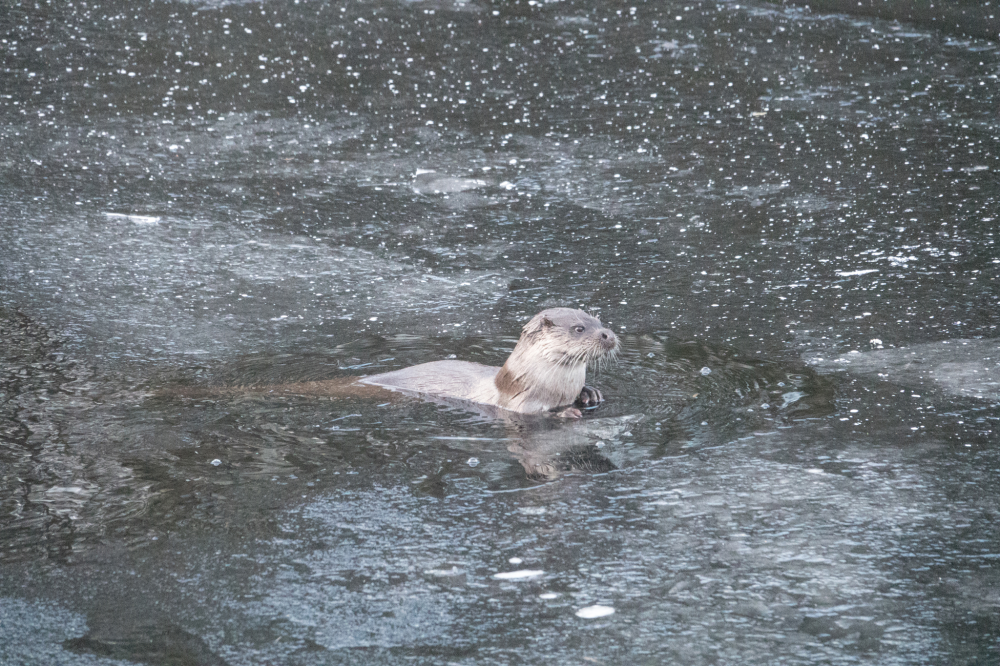
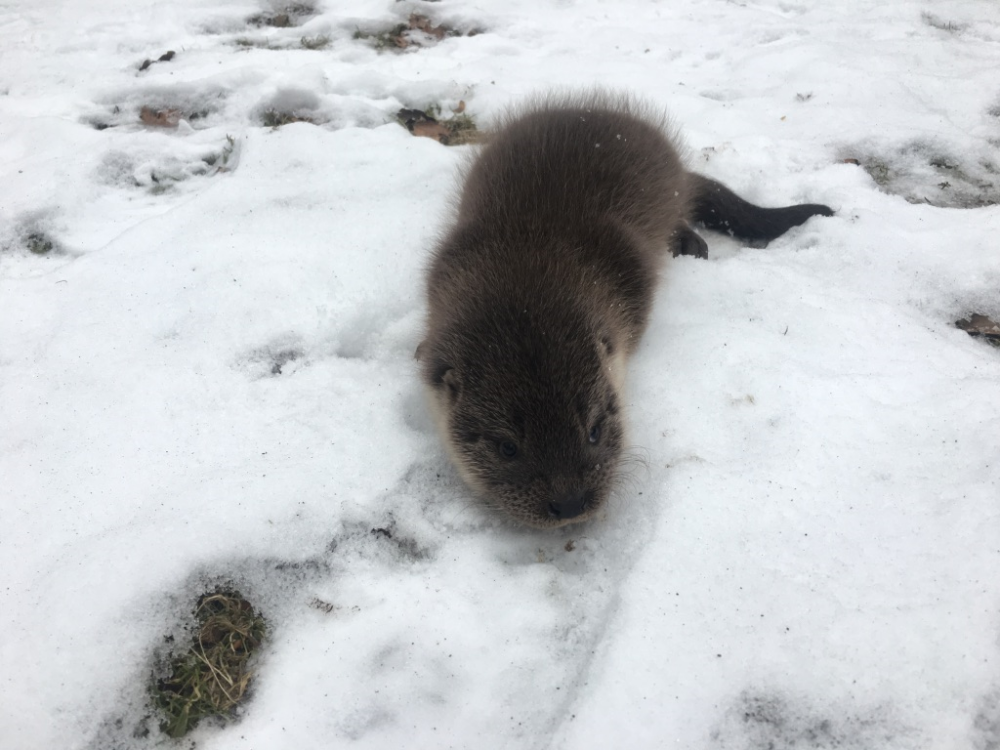
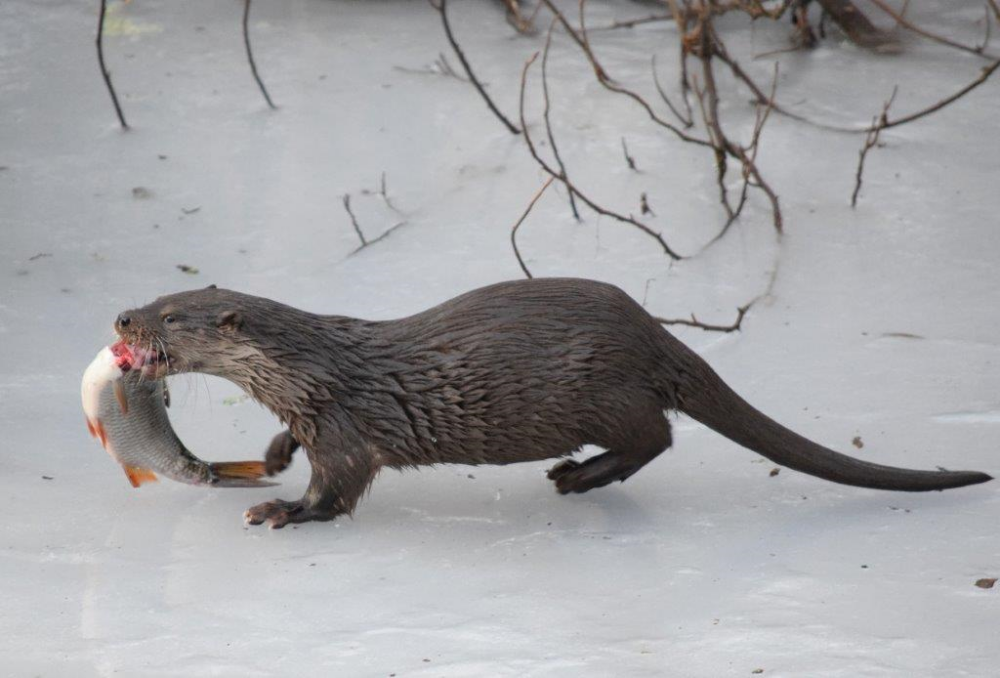
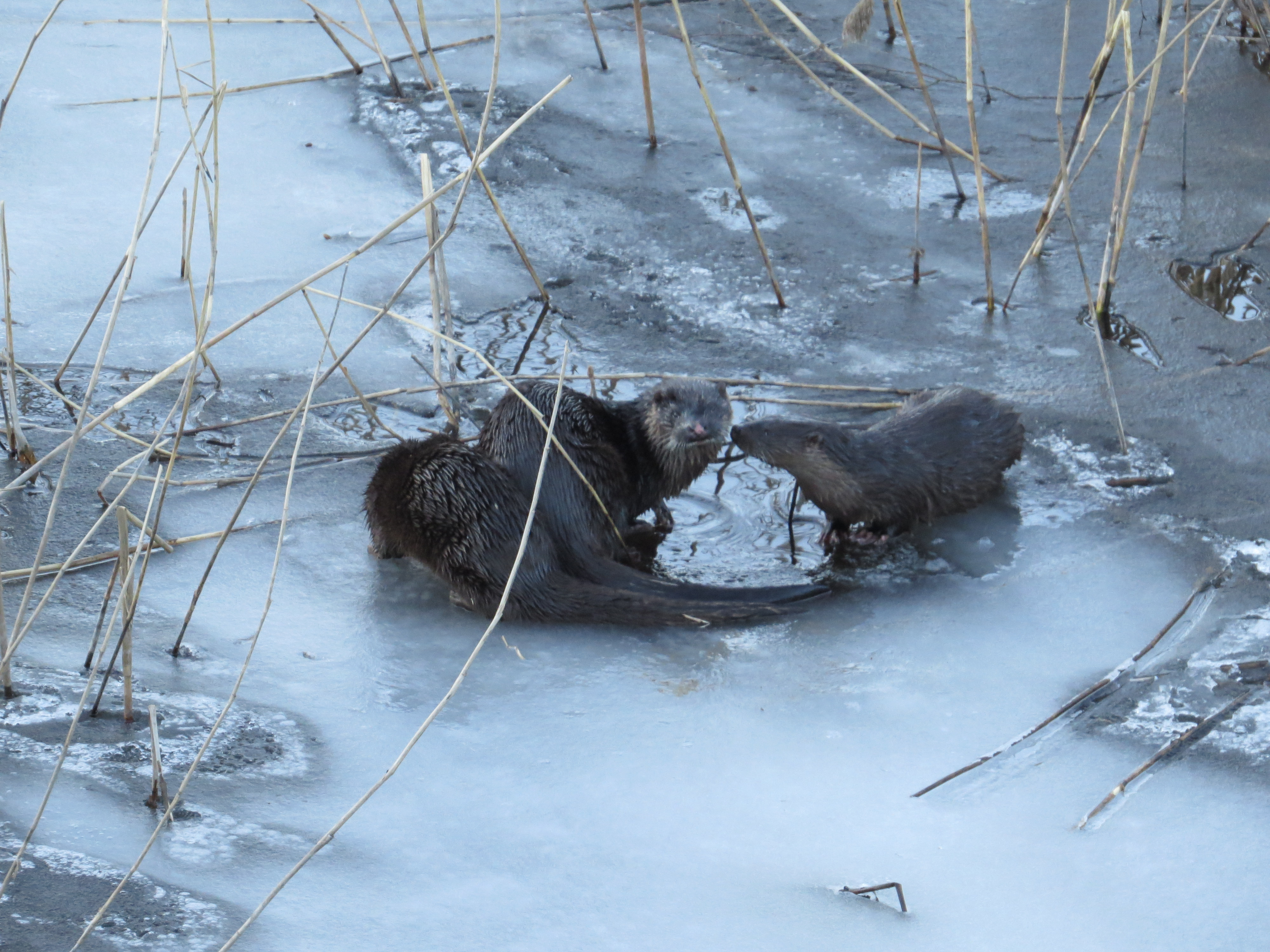
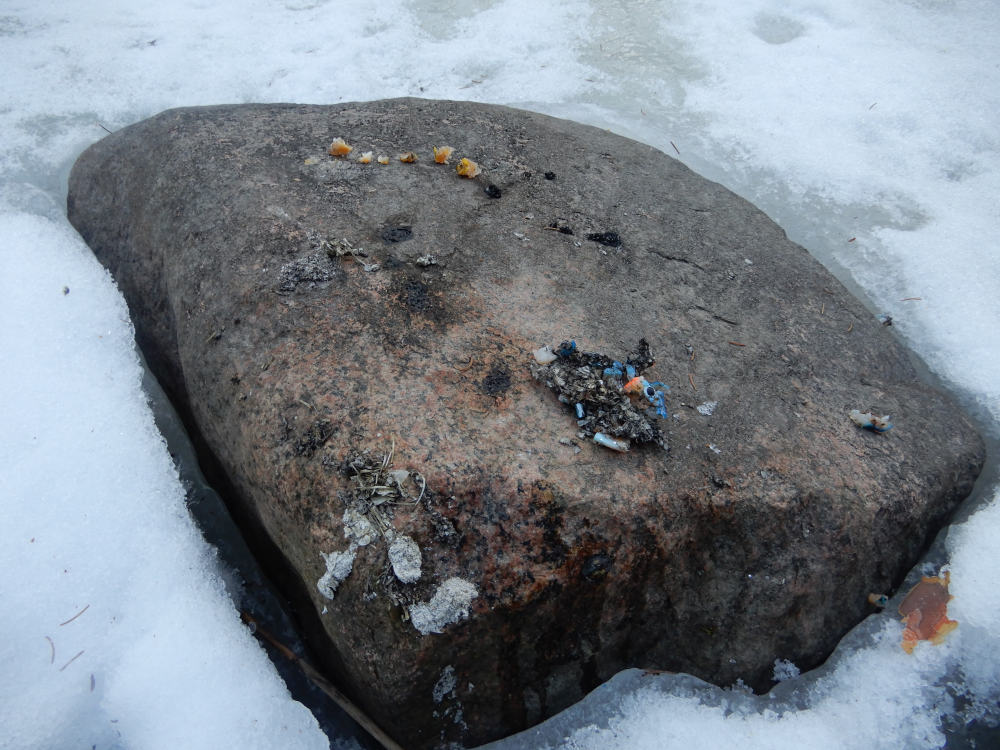
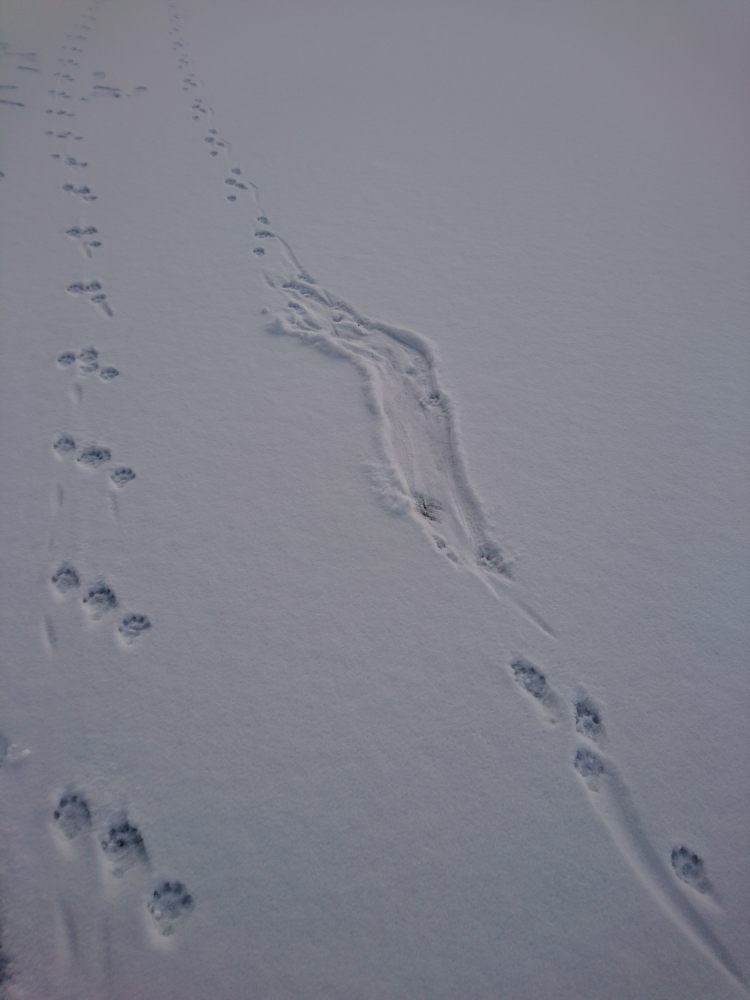
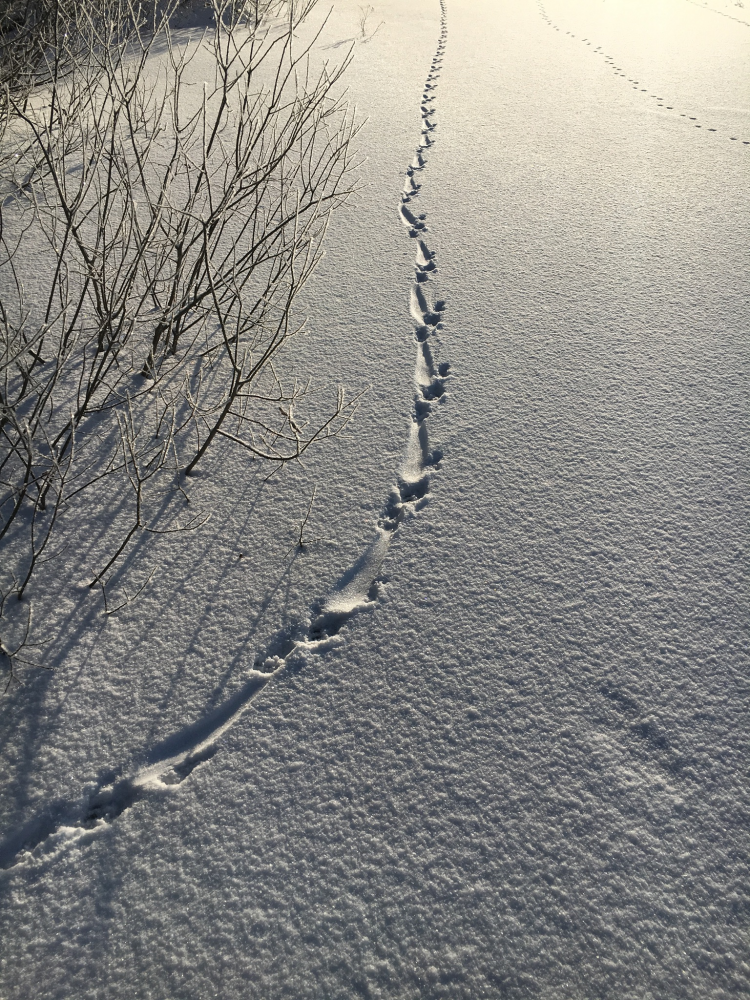
DISCUSSION
Citizen science stimulates engagement and interest for a species and can be a useful method in monitoring otters as a complement to standardized surveys. It has been used successfully in, for example, California (Black, 2009; Black et al., 2016), New Mexico (Savage and Klingel, 2015), Ireland (White et al., 2013) and Sweden (Kindberg et al., 2009). Depending on the species and the design of the study, it is possible to collect interesting data through citizen science at a low cost and effort. However, a number of problems must be overcome before the data is usable. For example, one problem is determining if a reported observation is the correct species, and another is the bias that comes with opportunistic data collected often in urban areas and scarcely in remote areas.
In the present study, most sightings of live otters were reported during spring and winter. The reason for this is probably attributed to the fact that otters are easier to see during this period due to snow cover; a dark body is easier to spot against a light background. In addition, the otter needs open water to forage and it is therefore easier to observe otters in a limited area when most lakes are covered with ice. The otter in Sweden seems to be more mobile during autumn, since the number of traffic killed otters increase during that time compared to the other seasons. Grogan et al. (2013) point out that rush hour is an important reason for the seasonality of road-killed otters in the UK. In spring and autumn, rush hour traffic occurs around dawn or dusk, while in winter rush hour is after dark and in summer, it is in daylight. They argue that a dip of traffic casualties during winter could be the result of observers travelling in the dark. However, our data only partly support this hypothesis. We recorded a dip in traffic casualties during spring and summer. Most otters in the present study were killed in traffic during autumn and winter. A somewhat different pattern was found in a study on otters in Israel: 64% of otter roadkills occurred in winter and spring (Guter et al., 2005) compared with 41% in the present study. Nevertheless, traffic was by far the predominant cause of death among otters sent to SMNH, and in other studies as well . However, traffic is probably an overestimated cause of death, since otters that die from natural causes are not as likely to be found. The percentage of traffic-killed otters in this study (80%) is higher, for example, than in Denmark (45,5%, Madsen et al., 1999) and Germany (69,9%, Hauer et al., 2002) but efforts to collect otter carcasses vary between countries and data are not comparable.
A small peak of the numbers of otters found dead in fishing gear during the summer is observed, probably due to the fact that people fish more during summer. Otters were predominantly found as bycatch in fyke nets, but occasionally also in gillnets. One otter was shot, which is illegal in Sweden. Although this otter may have been mistaken for a mink, a few otters are illegally shot at in Sweden (Ågren et al., 2015).
A weak pattern in numbers of individuals killed can be seen during different seasons. Throughout the year most reports consist of single otters (83%). Reports of two individuals are highest during winter and spring, but groups of 3-4 individuals are most common during winter. Groups of 5 individuals have only been reported two times, once during the summer and once in autumn. Groups of two otters could consist of breeding pairs or a mother with her cub. A group of 3-5 individuals is probably a mother with cubs. Groups of 2-5 individuals were reported throughout the year. This is consistent with signs of year-round reproduction, such as placenta scars, lactatation or pregnancies, observed from necropsies of otters at SMNH (Elmeros and Roos, 2011). In a study from England and Wales, otter pregnancies were also observed during most of the year and lactation during the whole year (Chadwick and Sherrard-Smith, 2010). Watt (1993) suggests that in areas where cubs have a longer dependence period, females have longer periods between mating (more than 12 months). If this is the case, it is important for the female to be able to reproduce during the whole year, as seen in Sweden, and not only during a short period.
It is difficult to see differences in mortality in patterns of gender and age among otters. This restricts speculation about the main period for mating and family constellations from this type of data. However, there is a pattern in the reports concerning numbers of individuals and season, which provides a good start to which raises new questions for further research. Data collected through citizen science, together with other observations such as signs of gestation from necropsies, can give a better picture about otter in Sweden.
It is important to keep in mind that these reports are correlated to the density of interested observers and does not accurately represent otter occurrence in the whole country. This makes it difficult to know if absence of data in certain areas is due to a lack of observations or because otters are not present. Therefore, standardized surveys are very important and cannot be replaced by opportunistic reports from the public. But when the public gets the opportunity to report their sightings and receive a response, it is possible to create an engagement and interest in otters and simultaneously to collect valuable data.
Acknowledgements: We wish to thank all the numerous people who have reported sightings of otters and those who have sent in carcasses to us. The police have been very helpful, as well as the taxidermists at the museum who first received the carcasses. We also want to thank Professor Sven O. Kullander who has helped with the web page and Douglas Jones who helped us check the language, both at SMNH. Finally, we want to thank Francisco Perera Rider for drawing the maps.
REFERENCES
Ågren, E.O., Bröjer, C., Roos, A. (2015). Evidence of shotgun wounded otters (Lutra lutra) in Sweden. European Otter Workshop, Stockholm, Sweden June 8-10.
Black, J.M. (2009). River otter monitoring by citizen science volunteers in Northern California: Social groups and litter size. Northwestern Naturalist 90:130-135.
Black, J.M., Wampole, E., Myer, J.E. (2016). Fifteen Years of River Otter Monitoring by Citizen-Science Volunteers in Northern California: Litter Size. Northwestern Naturalist 97:226-236.
https://doi-org.ezproxy.its.uu.se/10.1898/NWN16-02.1
Chadwick, E.A., Sherrard-Smith, E. (2010). Pregnancy among otters (Lutra lutra) found dead in England and Wales: Foetal Development and lack of seasonality. IUCN Otter Specialist Group Bulletin 27: 33-41.
Elmeros, M., Roos, A. (2011). Reproductive timing in Eurasian Otter Lutra lutra along a climate gradient. Hystrix, the Italian Journal of Mammalogy 22 Special issue: Proceedings of the IUCN XI International Otter Colloquium.
Grogan, A., Green, R., Rushton, S. (2013). The impacts of roads on Eurasian otters (Lutra lutra). IUCN Otter Spec. Group Bull. 30: 44-58.
Guter, A., Dolev, A., Saltz, D., Kronfeld-Schor, N. (2005). Temporal and spatial influences on road mortality in otters: Conservation implications. Israel Journal of Zoology 51: 199-207.
https://www.researchgate.net/publication/250016335_Temporal_and_spatial_influences_on_road_mortality_in_otters_Conservation_implications
Hauer, S., Ansorge, H., Zinke, O. (2002). Mortality patterns of otters (Lutra lutra) from eastern Germany. Journal of Zool., London. 256: 361-368.
Kindberg, J., Ericsson, G., Swenson, J.E. (2009). Monitoring rare or elusive large mammals using effort-corrected voluntary observers. Biological Conservation 142: 159-165.
Madsen, A.B., Dietz, H.H., Henriksen, P., Clausen, B. (1999). Survey of Danish free living otters Lutra lutra – a consecutive collection and necropsy of dead bodies. IUCN Otter Spec. Group Bull. 16: 65-76.
Olsson, M., Sandegren, F. (1991a). Is PCB partly responsible for the decline of the otter in Europe? In: Reuter, C., Röchert, R. (Eds.). Habitat, Hankensbüttel, Germany, 223-227.
Olsson, M., Sandegren, F. (1991b). Otter survival and toxic chemicals – implication for otter conservation programmes. In: Reuter, C., Röchert, R. (Eds.). Habitat, Hankensbüttel, Germany: 191-200.
Roos, A.M., Bäcklin, B.-M., Helander, B.O., Rigét, F.F., Eriksson, U.C. (2012). Improved reproductive success in otters (Lutra lutra), grey seals (Halichoerus grypus) and sea eagles (Haliaeetus albicilla) from Sweden in relation to concentrations of organochlorine contaminants. Environmental Pollution 170: 268-275.
Roos. A., Greyerz. E., Olsson. M., Sandegren. F. (2001). The otter (Lutra lutra) in Sweden - population trends in relation to ΣDDT and total PCB concentrations during 1968–99. Environmental Pollution 111: 457-469.
Savage, M., Klingel, J. (2015). Citizen monitoring after an otter restoration (Lontra canadensis) in New Mexico, USA. IUCN Otter Spec. Group Bull. 32: 21-24.
Watt, J.P. (1993). Ontogeny of hunting behavior of otters (Lutra lutra) in a marine environment. Symposia of Zoological Society of London, 65: 87-104. In Kruuk. H., 1995: Wild Otters – Predation and Populations.
White, S., O’Neill, D., O’Meara, D.B., Shores, C., O’Reilly, C., Harrington, A.P., Weyman, G., Sleeman, D.P. (2013). A non-invasive genetic survey of otters (Lutra lutra) in an urban environment: a pilot study with citizen scientists. IUCN Otter Spec. Group Bull, 30 (2):103 - 111
Résumé : La «Science Citoyenne» dans la Recherche sur la Loutre Eurasienne (Lutra lutra), Rapports d’Observations et Découverte de Loutres Mortes
Depuis 2003, le Musée d'Histoire Naturelle Suédois (MHNS) gère une page du site internet où le public peut signaler des observations et des traces de loutre. Entre 2003 et 2014, le musée a reçu 1142 rapports d’observations. Ces observations ont été répertoriées suivant la saison et le type d'observation : animaux vivants, traces et taille du groupe. La plupart des observations d'animaux vivants ont eu lieu au printemps (35%) et provenaient uniquement de sites proches de populations humaines; Ces données ne concernent donc pas l'ensemble du pays. Néanmoins, ce type de « science citoyenne » constitue une excellente source d'informations sur l’insaisissable loutre et sensibilise davantage le public aux loutres, contribuant ainsi à soutenir la protection de l’espèce.
En Suède, les loutres trouvées mortes sont envoyées au MHNS pour autopsie et échantillonnage destiné à la banque de données environnemental des spécimens du musée. Au total, 701 loutres mortes ont été envoyées au MHNS entre 2003 et 2014. La plupart des loutres ont été tuées dans des accidents de la route (80%) et certaines ont été capturées dans des engins de pêche (8%). Les accidents de la route étaient plus fréquents en automne et en hiver, alors que les captures dans les engins de pêche l’étaient davantage en été.
Les rapports d’observations de loutres vivantes ou d’indices de présence, ainsi que les informations sur les loutres mortes, suggèrent des schémas de répartition et un statut de reproduction des loutres en Suède. Ces rapports fournissent des informations complémentaires intéressantes sur le statut et le comportement des loutres et constituent des compléments appréciables aux suivis scientifiques des loutres.
Revenez au dessus
Resumen: Ciencia Ciudadana en la Investigación de Nutrias (Lutra lutra) Reportes de Avistajes y Hallazgos de Nutrias Muertas
Desde 2003 el Museo Sueco de Historia Natural (SMNH) ha administrado una página web en la cual el público general puede reportar avistajes de nutrias y huellas de nutrias. Entre 2003 y 2014 el Museo recibió 1142 reportes. Los reportes fueron divididos entre estaciones, y tipo de avistaje: animales vivos, huellas y tamaño de grupo. La mayoría de los reportes de animales vivos fueron recibidos durante la primavera (35%) y se originaron solamente cerca de poblaciones humanas; los datos, por lo tanto, no representan a todo el país. Sin embargo, este tipo de ciencia ciudadana provee una gran fuente de información acerca de la elusiva nutria, e incrementa la sensibilidad pública hacia las nutrias, por lo tanto ayudando a apoyar su conservación.
En Suecia, las nutrias encontradas muertas son enviadas al SMNH para necropsia y toma de muestras para el Banco de Especímenes Ambientales del Museo. Entre 2003 y 2014 fueron enviadas un total de 701 nutrias muertas. La mayoría fue muerta por tráfico automotor (80%) y algunas fueron capturadas incidentalmente en artes de pesca (8%). Las muertes por tráfico automotor fueron más comunes durante el otoño e invierno, mientras que las capturas incidentales en artes de pesca fueron más comunes durante el verano.
Los reportes de nutrias vivas y de signos, junto con la información sobre nutrias muertas, sugieren patrones de distribución y status reproductivos de las nutrias en Suecia. Dan una interesante información adicional sobre el status y el comportamiento de las nutrias y son valiosos complementos de los relevamientos científicos..
Vuelva a la tapa

